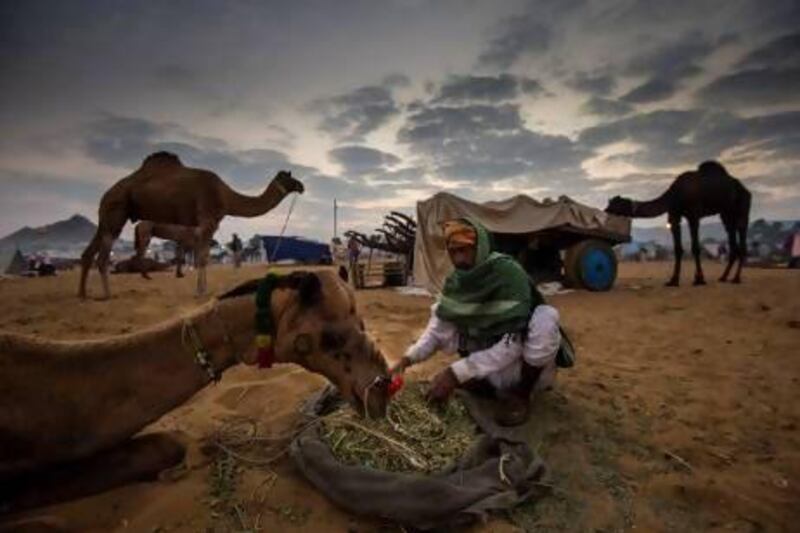Once it was just the camels and other livestock, brought by their semi-nomadic owners for a five-day trading market timed around the full moon Hindu festival of Kartik Poornima.
Now the Pushkar Mela, which finished two days ago, is one of India's most famous and photogenic annual events, drawing onlookers from around the world.
Scheduled alongside the livestock market sited on the outskirts of the holy lakeside town of Pushkar are now camel races, moustache competitions, a tug of war between Rajasthanis and foreigners, dawn hot-air balloon rides, and pilgrims jostling alongside tourists. There are ferris wheels and amusement parks, handicraft shops and camel safaris.
Such is the crush of people - the population soars from its year-round figure of around 14,000 people to up to 300,000 - many of the sales of the camels, horses and cattle now happen in the days before the five-day fair officially begins.
But at its heart, the essence of the Pushkar Mela is unchanged, says Simon de Trey-White, who spent a few days photographing the event.
"Over the years the Rajasthan Tourism department has revamped this traditional rural affair with the creation of an arena and a program of events designed to broaden its appeal," he said.
"Diverting as these events can be, it's the original desert camp and the camel traders that interest me, particularly at dawn and dusk when low-raking soft light coming though dust and cooking fires offers spine tingling opportunities to document scenes that have changed little in decades."
The winner of this year's moustache competition, 52-year-old local man Girdhar Vyas, reported he had been growing his for 29 years and that each side had reached 2.6 metres long. He usually keeps it twirled into spirals and nestled against his face with a rubber band but revealed it for the competition, for which he earned the first prize of 1,500 rupees (Dh99.5). The judging is based not solely on length but also quality, color, maintenance and presentation on the face.
Of the livestock on sale, Pushkar has become known for its horse sales, with horses from the Punjab and Uttar Pradesh attracting top prices.
Security is also tightened for the festival, with the main Brahma temple being barricaded from traffic and protected by the Indian army.
Prices peak during the Pushkar Mela, with room rates quadrupling. The cheapest hotel rooms go particularly high, with a single room that would normally cost R100 (Dh6.6) inflating to R800 during the festival.
While the Pushkar Mela's popularity as a tourist draw is relatively new, the religious component goes back millennia, with the foundations of the oldest of the 500 temples, Jagatpita Brahma Mandir, dating back 2,000 years.
At the start of the 20th century, the Imperial Gazetteer of India recorded that 100,000 Hindu pilgrims would descend on Pushkar each year for Kartik Poornima.
Swimming in Pushkar lake on the day of the full moon is considered particularly auspicious and is considered to be the anniversary of the day Brahma created the lake.





